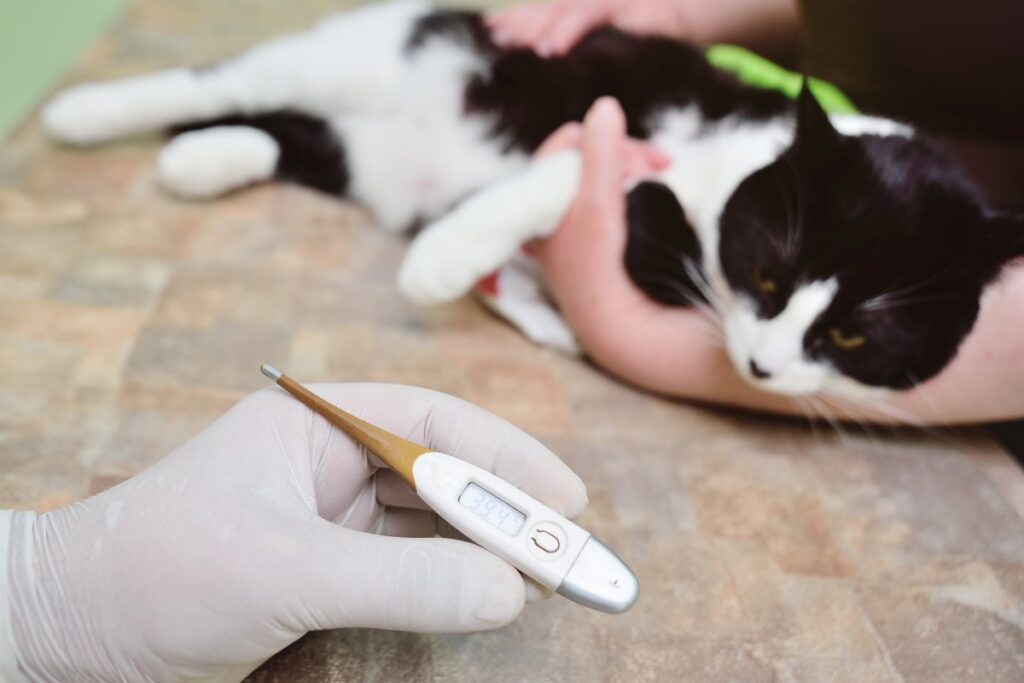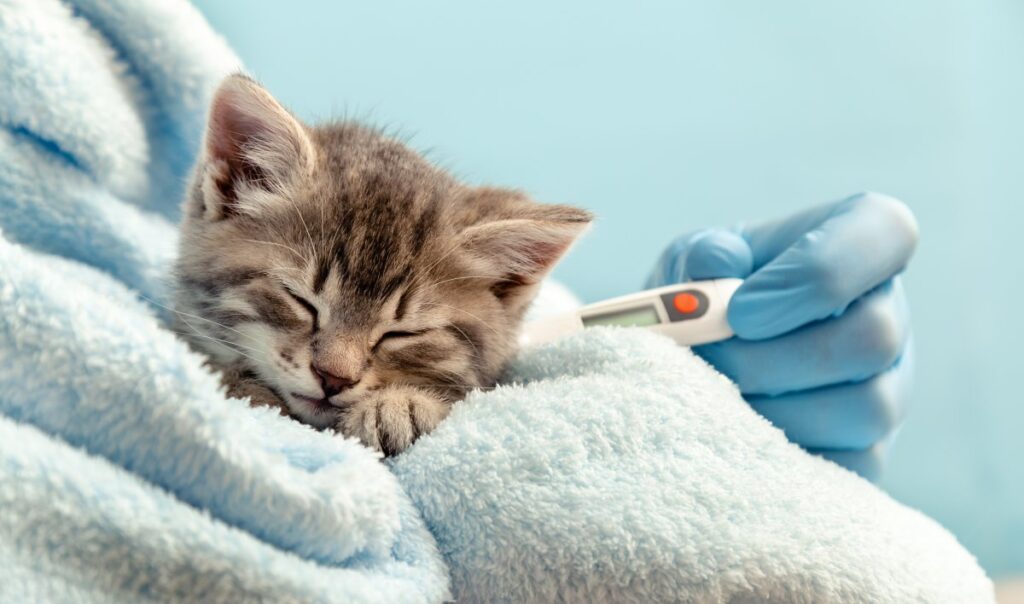Humans can tell about their fevers or their friend’s fevers easily because they have been used to being checked in the same way as well. However, some cat parents might be aware of checking cat fever.
However, it is important to understand that it doesn’t indicate a fever if your cat is warm. There are a few ways through which you can be for sure
The Normal Temperature in Cats
It is important to know the normal temperature in cats before measuring it to determine if they have a fever. An average temperature of a cat usually ranges from around 100.4 degrees to 102.5 degrees. A cat fever occurs when the temperature of the cat is above 102.5 degrees.
Many people believe that fevers tend to cleanse the body and help fight diseases; however, if fever in cats is higher than 106 degrees, it can damage the cat’s organs. In case of very high cat fever, make sure you call the vet right in that instance.

Everything You Need To Know About A Cat Fever and How To Check Cat Fever
It is important to normalize the idea of cats getting sick like humans as well. However, the methods to neutralize the fever effect and medications used for humans don’t work on cats, but make sure you find ways to deal with the cat fever.
If you feel like only feeling your cat’s forehead is going to help you figure out if your cat has a fever or not, you’re wrong. Checking the forehead isn’t a reliable method at all. Fever in cats should be checked at home with a thermometer inserted into the ear or maybe even in the rectum.
This is the procedure that your cat will most certainly hate and might resist a lot, but it is still an important step to figure out if your cat has a fever or not.
However, instead of going for the thermometer step instantly and making your cat feel discomfort, you can study cat fever and its symptoms yourself to better understand your cat’s health.

Causes of Fever In Cats
It is essential to understand that cat fever is a more regulated type of hyperthermia. The increase in the body temperature that might be above normal is known as hyperthermia. Unregulated and abnormal hyperthermia in cats might be caused due to being in a high-temperature environment. Other causes might also be increased muscle activity.
This cat fever usually develops when the set point is increased in the cat’s hypothalamus. A part of the brain tends to act as the body’s thermostat. The causes behind these usually are the following:
- It might be due to a bacterial or a fungal infection
- A tumor might cause cat fever
- The cat might have an injury from a trauma which leads to a cat fever
- Diseases like the lupus
The cat fever in outdoor cats tends to be more likely, as they are at a higher risk to catch diseases that cause fever-like:
Cytauxzoonosis
This is a tick-borne condition which is known as bobcat fever in cats
Haemobartonellosis
This is a severe parasitic, bacterial infection seen in cats.
Bartonellosis
This is commonly seen in cats and is known as cat scratch fever
Ehrlichiosis
This is a tick-borne condition as well that affects the cats the most
It is important to know that cat fever lasting for more than a few days without any real reason is the FUO, i.e., the fever of unknown origins. In this case, medical help is needed.

Symptoms of Cat Fever
The diseases that lead to cat fever might also lead to telltale behavior, typically seen in wild animals. This is the behavior that is awakened in animals; it is the basic instinct to survive. This allows the cats to conserve their energy and fight the fever by causing stimulation within the immune system. This slows down the viruses and bacteria in the body.
Here are a few symptoms of cat fever:
- Depression
- Loss of appetite
- Decreased drinking and dehydration
- Hiding
- Shivering
- Rapid breathing
- Lack of physical activities and energy
- Poor grooming
- Vomiting
- Diarrhea
- Weakness and being lethargic
How to Take the Cat’s Temperature
As discussed before, the average temperature in cats ranges from 100.4 degrees to 102.5 degrees. If the temperature goes higher than 102.5 degrees, it means your cat has a fever. Moreover, going above 106 degrees means the cat is at serious risk of damaging its organs.
If you choose to take the cat’s temperature, make sure you do it straightforwardly. Use a digital thermometer, which should be aimed at the cat’s ear (preferably), or you can even use the pediatric rectal thermometer. The pediatric thermometer tends to read more accurately.
Make sure you don’t use an old thermometer with mercury, as that can be harmful.

What to Do In Case Your Cat Has a High Fever?
First of all, make sure you never give your cat any medications before consulting the vet. Many human fever medications aren’t suitable for cat fever, as they can be seriously toxic to cats.
Make sure your cat is hydrated enough and make sure it is comfortable and relaxing while you observe its behavior. Check if the fever is still there after 24 hours. If it is, then contact your vet and get your cat checked.
Conclusion
Through this article, you are sure more aware of cat fever and how to check cat fever. Through the information you’ve gathered, make sure you follow the appropriate steps in treating the cat fever instead of using your medications or treatments on it, as cats have different tolerance to human medications.







